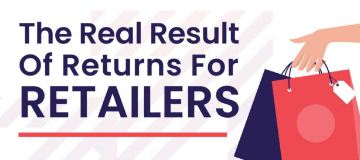For better or for worse, many retail organizations will have to face frequent returns. Whether that be because the customer made a mistake, or perhaps the retailer made a mistake, returns are a normal part of the retailing industry. Avoiding excess returns is imperative for reducing operational costs and improving customer experience. This post will detail the ways in which retailers can avoid losing big on returns, in addition to strategies to reduce the number of returns entirely.
Less returns start with optimizing a product’s landing page. As it stands today, the most prevalent reason for a customer returning their purchase is due to it not living up to the description or images coupled with the product. Who wouldn’t return a product that’s delivered looking nothing like what they ordered? Retailers must provide the most detailed description for their products, in addition to the most realistic and unedited images of their products. Going the extra mile for sizing information, such as measurements, also helps combat the nearly 52% rate of returns specifically related to sizing.
Improving sales and reducing returns is actually made much easier through offering free shipping and returns. May seem contradictory, but often times what happens is customers will place orders for products they know they can safely return but end up appreciating the products more than they thought. Customers keeping these products results in retailers experiencing additional sales. The inverse can be true too, though. Some customers may abuse these policies.
As online retail and shopping as a whole were so popular this past year, the sizable increase in returns is much less shocking. Returns this past year saw a 70% year-over-year increase. This issue is made worse with certain customers scamming retailers through wardrobing or bracketing tactics, both of which void most return policies by these retailers. Limiting the ways in which customers can take advantage of retailers is therefore imperative.
If these tactics weren’t enough for retailers to struggle with, they also have to be worried about fraudulent purchases. Sometimes customers will attempt to launder money from stolen credit cards through returns. Businesses without anti-fraud tools should invest in them, as they’re capable of blocking transactions from stolen cards. Then the retailer is able to offer refunds to the original cardholder. Reducing the costs of returns on retailers is also made possible through some of these tools. There are even organizations out there that offer such professional services, with tailor made solutions for your business.
Amongst managing with these scummy tactics, retailers are constantly innovating the ways in which they increase their sales and keep their customers happy. Sometimes a helping hand can make these responsibilities feel a bit more manageable. For more information on how the services offered by the aforementioned organizations can help reduce the cost of your customers’ returns, be sure to check out the infographic coupled alongside this post. Courtesy of Signature Payments.




